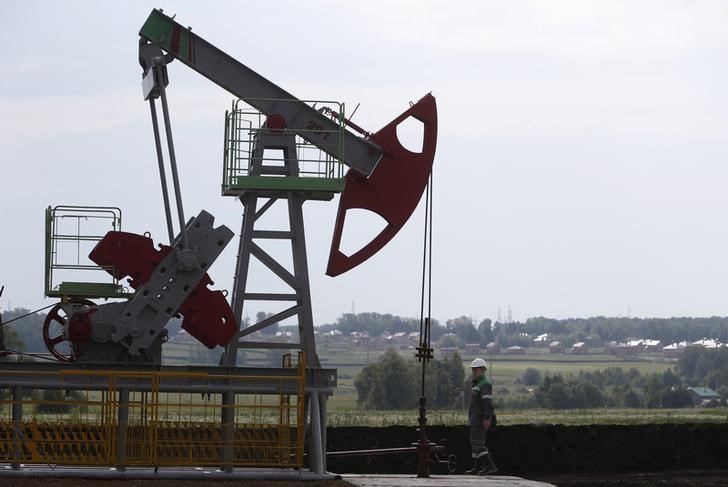Investing.com — Oil prices fell Thursday, but traders had to contend with wild swings amid conflicting reports on the progress toward an extended Israel-Hamas ceasefire that may likely ease geopolitical tensions and concerns about a supply disruptions.
By 14:30 ET (19.30 GMT), the futures settled 2.5% lower at $73.98 a barrel and the contract fell 2% to $78.91 a barrel.
Gaza ceasefire uncertainty weighs
Tensions in the Middle East – that have kept supply disruptions concerns elevated – remained in focus as traders weighed up conflicting reports about a potential ceasefire in Gaza.
Hamas reportedly received its first proposal for an extended pause to the fighting in Gaza in exchange for releasing the remaining hostages it holds, Reuters reported, citing a Palestinian official close to the the negotiations. The official also told Reuters that Hamas was unlikely to reject the proposal, but Hamas cooled expectations of an imminent agreement.
“We say that the current stage of negotiation is zero and at the same time we cannot say that we have reached an agreement,” Taher al-Nono, Hamas’ media adviser said Thursday.
Beyond the war in Gaza, however, tensions in the Middle East continue to simmer after the U.S. vowed to take “all necessary actions” to defend its troops following a deadly drone attack in Jordan.
Major central banks pivot towards rate cuts
The kept interest rates unchanged on Wednesday, as widely expected, and Chair poured cold water on the idea that a cut could come as soon as March, its next meeting.
While this disappointed traders looking for an early rate cut to stimulate economic activity in the world’s largest economy, and biggest consumer of energy, Powell did indicate that rates had peaked and would move lower in coming months if inflation continued to fall.
Data released earlier Thursday showed that the labor market is steadily easing, as for state unemployment benefits increased 9,000 to a seasonally adjusted 224,000 for the week ended Jan. 27.
This was more than expected, and could help to curb wage inflation.
Elsewhere, the kept interest rates at a nearly 16-year high earlier Thursday, but softened its stance about the possibility of cutting them as one of its policymakers cast the first vote for a reduction in borrowing costs since 2020.
Also, inflation in the eased last month, falling to 2.8% in January on an annual basis from 2.9% in December, inching towards the ECB’s own 2% target.
This all suggests that these major central banks are increasingly pivoting towards lower interest rates this year.
No change at OPEC+ meeting
The Organization of Petroleum Exporting Countries and allies, known as OPEC+, held a meeting earlier Thursday, the first major meeting of 2024, but there was limited price impact after the group left production policy changes off its agenda..
Underwhelming production cuts from the OPEC+ in late-2023 were a key point of contention for oil prices, as the move pointed to less tight markets in 2024 than initially expected.
The cartel also now appears to have limited headroom to cut production further and support oil prices.
(Peter Nurse, Ambar Warrick contributed to this article.)
Read the full article here
















